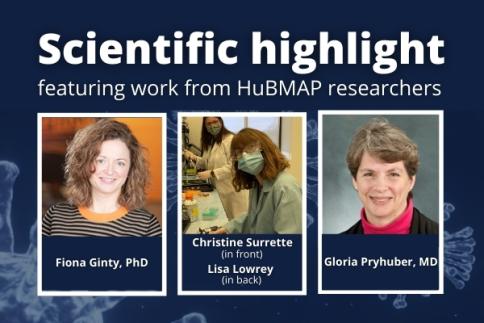
While scientists continue to develop vaccines and therapies for the coronavirus disease (COVID-19), it is also vital to understand how the coronavirus infects cells and which types of cells it attacks upon entering the body. This area of research aligns with the goal of the NIH Common Fund Human BioMolecular Atlas Program (HuBMAP) to study how cells in the human body influence biological processes such as aging and disease progression.
Drs. Fiona Ginty, PhD of GE Research, and Gloria Pryhuber, MD of University of Rochester Medical Center, two HuBMAP members (Dr. Pryhuber is also a member of LungMAP), have been studying cell-to-cell interactions to find interventions to prevent the coronavirus from entering cells. Patients with COVID-19 experience a wide range of symptoms, which may exist because of several factors, such as the make-up and activation of neighboring cells, the organization of cells in space, and the types of neighboring cells that are activated.
Drs. Ginty and Pryhuber will use protein analyzing methods to measure cell surface proteins that interact with the coronavirus and allow it to enter cells. Using a cutting-edge technique called immunofluorescence microscopy, they will be able to see how cells of the upper and lower respiratory tract interact with the coronavirus. The hope is that once they identify the proteins expressed by infected cells, they may find molecular targets to promote patient recovery and lead to more effective treatments against COVID-19.
GE Researchers Conducting Lung Study to Understand Most Severe Cases Leading to COVID-19 Fatalities
Research reported here was supported by the National Institutes of Health under award number 3UH3CA246594-02S1.


